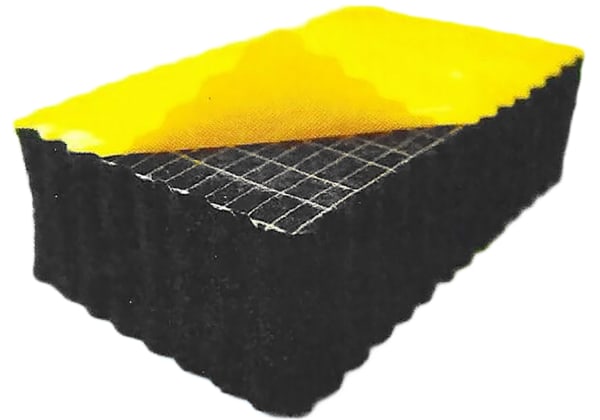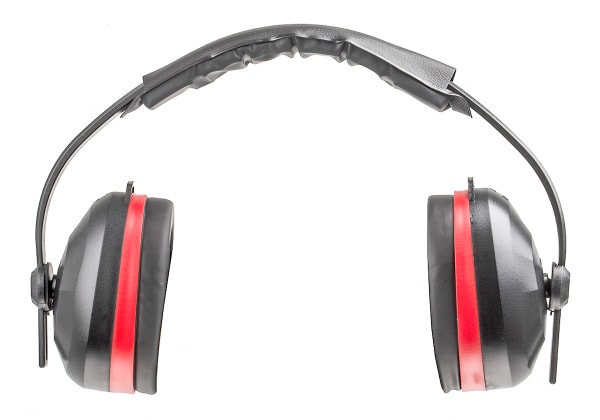- Published 21 Oct 2024
- Last Modified 21 Oct 2024
- 8 min
A Guide to Sound Measurement & Sound Level Meters
Sound level meters help ensure noise stays at safe and healthy levels. Learn here about sound level meter types, how they work, and how to use them.
Reviewed by Peter Kendall, Technical Support Engineer (October 2024
Have you wondered, ‘What are decibels?’ Are you curious about how to measure sound? Sound measurement is important for maintaining safe worksites, getting accurate data in equipment testing, and keeping people safe and comfortable.
This guide explains the decibel scale, how sound level meters work, and how to use a sound level meter.
What is a Sound Level Meter?
You may have heard of decibels (dB) in places like stadiums, but what is the decibel scale? It’s a method of relating noise’s sound pressure level (indicating sound’s energy or the energy required to create it) with the noise intensity our ears can handle. We perceive sound intensity in a base-10 logarithmic fashion, meaning that as sound gets ten times more powerful we experience twice as much noise (and three times as much noise for sound one hundred times more powerful, and so on).
The decibel (one tenth of a bel: the original, but now less commonly used unit) is a logarithmic unit: A 10 dB increase indicates the sound pressure’s gained a zero. Thus, the decibel scale presents sound levels relevant to our aural health without us having to think about jumping between hundreds and millions.
What is a decibel meter? It is any sound level meter that processes sound pressure signals using logarithmic scaling and converts them into decibel readings.
Importance of Sound Safety
Sound measurement is essential for ensuring people using your equipment and property maintain their hearing. Complete or even partial hearing loss can greatly reduce quality of life and mental health. For this reason, sound measurement of worksites and business places is essential for ensuring personnel aren’t exposed to unsafe sound levels, and that they receive ear protection if they are.
Sound measurement also helps ensure businesses meet legal noise level standards so their noise doesn’t bother or harm the general public, especially at night. Generally, noise must not exceed 34 dBA between 11:00 pm. and 7:00 am. ‘dBA’ is a specialised unit that notes the meter’s frequency weighting.
Exposure duration is also critically important in sound measurement. The sound’s frequency (pitch) and environment factor in too.
When using the decibel scale, what decibel is too loud for a given exposure time? Equip ear protection if exposed to:
- 85 dBA for more than 8 hours: the level where the UK’s 2005 safety regulations require hearing protection.
- 100 dBA for more than 14 minutes.
- 110 dBA for more than 2 minutes.
You can experience sound levels that high when working with or around the following:
- Heavy industrial equipment, especially in factories
- Mining equipment
- Demolition hammers, such as in construction
- Aircraft engines
- Rubbish sorting
- Motorsports and concerts
How do Sound Level Meters Work?
How does a sound level meter work? Sound waves are pressure vibrations travelling through a medium, such as air. Sound level meters are essentially instruments for measuring pressure, so they’re also called sound pressure level readers. They feature a microphone that detects changes in pressure and converts them into an electrical signal. Further instruments and signal processors amplify and convert this into sound readings for the user, and this factors in the logarithmic behaviour of perceived sound intensity to produce readings in decibels.
This decibel readout can either be analogue or digital. Analogue displays feature a physical needle and gauge, while digital ones display a numeric dB value. Analogue gives you a quicker, more responsive sense of the sound conditions and digital is good for giving a specific, accurate dB value to record.
Now, how does a sound level meter measure volume? The next sections explain the different processes involved in converting pressure signals into sound readings.
Time Weighting
With time weighting, sound level meters account for sudden or gradual changes in the sound level. They separately detect Fast (F) sound signals, which come on and off quickly, and Slow (S) ones, which come and go more gradually. The sound level meter then performs a form of averaging to produce a decibel value.
Time weighting previously used a third scale: Impulse (I), which detects fast increases and slow decreases. Impulse has mainly been superseded in sound measurement standards, though, in favour of just F and S.
Frequency Weighting
Frequency weighting is another factor in how to measure noise levels. It involves the range of pitches the sound level meter can detect and display. There are A, C, and Z frequency weighting categories, and it’s important to choose the right one for the environment to assess.
These categories are less about a range of detectable frequencies than about accounting for the ranges humans hear most comfortably: around 500 Hz to 8 kHz. Some instruments emphasise those frequencies over others, giving those frequencies more weight.
- A: Handles 20 Hz to 20 kHz, but weights very favourably to the range of human hearing. This uses the units of dBA, which come up in describing safe sound levels.
- C: This covers 31.5 Hz to 8 kHz and can detect low frequencies better than A-weighting can, such as strong bass or low-frequency percussive noise. It’s also useful for measuring sound that can quickly spike in volume, such as with engines, industrial machinery, or explosions. This weighting uses the dBC unit.
- Z: Detects 8 Hz to 20 kHz, but with no weighting (Z for zero weighting). This is more suited to measuring environmental noise and getting a raw reading of the conditions. This scale uses dBZ as its unit.
How to Use Sound Level Meters
Now that you know the importance of safe sound levels, here’s how to use digital sound level meters to measure noise levels. It’s quite simple.
- Space the sound level meter away from walls or obstacles, which could block or reflect sound and affect the reading.
- Hold or place the meter approximately 1.5 metres above the ground.
- Point the meter’s microphone towards the sound source to be measured.
- Activate the meter and take a reading. Some meters need longer reading times than others, so consult your instrument’s documents for how to use it.
- Record the sound reading, along with helpful info like the date and time; sound sources measured; air temperature and other ambient conditions; and the instrument used and its calibration status.
If taking sound measurements outdoors, try to do it in dry weather and avoid wind speeds above 5 m/s.
Ongoing sound level meter calibration is essential for ensuring you don’t read or rate loud environments as quieter than they actually are and incur unintentional hearing damage or noise complaints. To calibrate these instruments yourself and avoid a calibration service, you’ll need a sound level calibrator.
How to calibrate a sound level meter using a sound level calibrator:
- Turn the calibrator on and connect it to your sound level meter’s microphone.
- The calibrator will typically emit a 1 kHz sound at a set sound level, such as 114 dB. They do offer adjustability for these settings, though.
- Once you know what the calibrator’s sending out, verify that the sound level meter is reading the same thing.
- If it doesn’t, then set the meter’s offset accordingly using its calibration menu or adjustment screw, depending on the meter.
RS’s calibration service can ensure your sound measurement helps you keep your sites at safe sound levels.
Types of Sound Level Meters
What is the best sound level meter? That depends on your sound measurement needs. Choose from Class 1 and 2 sound level meters, which differ by their accuracy and fall under the IEC 61672 standard. You can also use sound dosimeters.
Class 1 Sound Level Meter
Use Class 1 sound level meters for when you need precise, accurate measurements of very low sound levels. These come up chiefly in laboratory work, calibration, and equipment testing. Class 1 meters can be more expensive, though.
Class 2 Sound Level Meter
Class 2 sound level meters are for measuring environmental sound for the purposes of assessing workplace safety or compliance with public outdoor noise level standards. With Class 2, you can learn the loudness of your worksite so you can determine the hearing protection and exposure limits your workers must adopt to protect their hearing and health.
Sound Dosimeters
While sound level meters measure noise levels in an environment at the instant in time they’re used, a dosimeter or dosemeter measures the sound it’s exposed to over a period of time — similar in principle to dosimeters that measure exposure to radiation over time. Noise dosimeters passively measure a user’s prolonged exposure to high sound levels so they can be aware if they’ve exceeded safe sound levels. They feature a microphone that clips to your clothing, with a wire leading to an electronic meter that fits in your pocket. Noise dosimeters are very helpful for letting you know when you’ve been exposed to more sound than is healthy, especially if you’ve gotten too used to loud conditions.
RS also has test & measurement equipment for various other industrial scenarios. Explore our instruments today.



